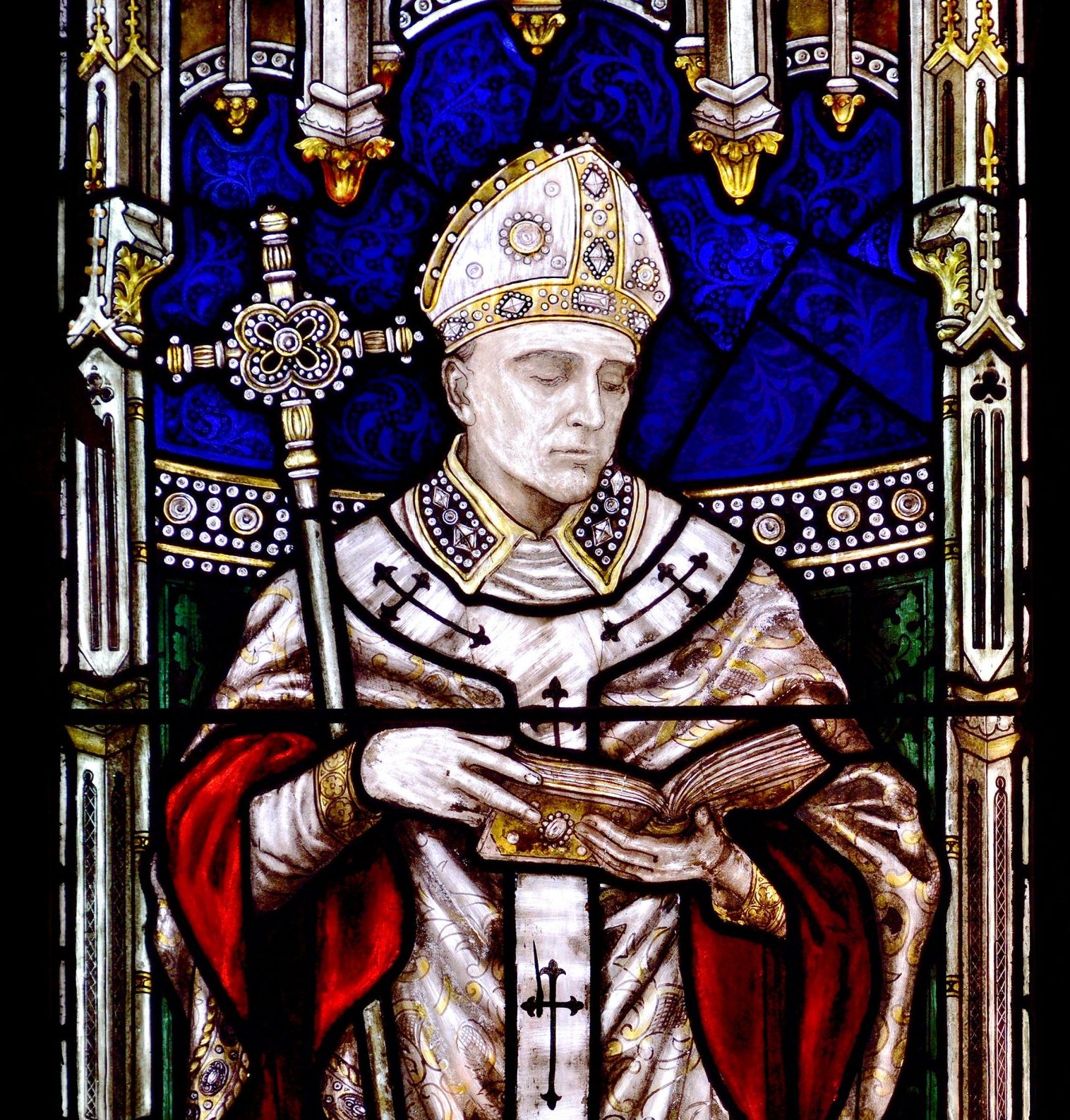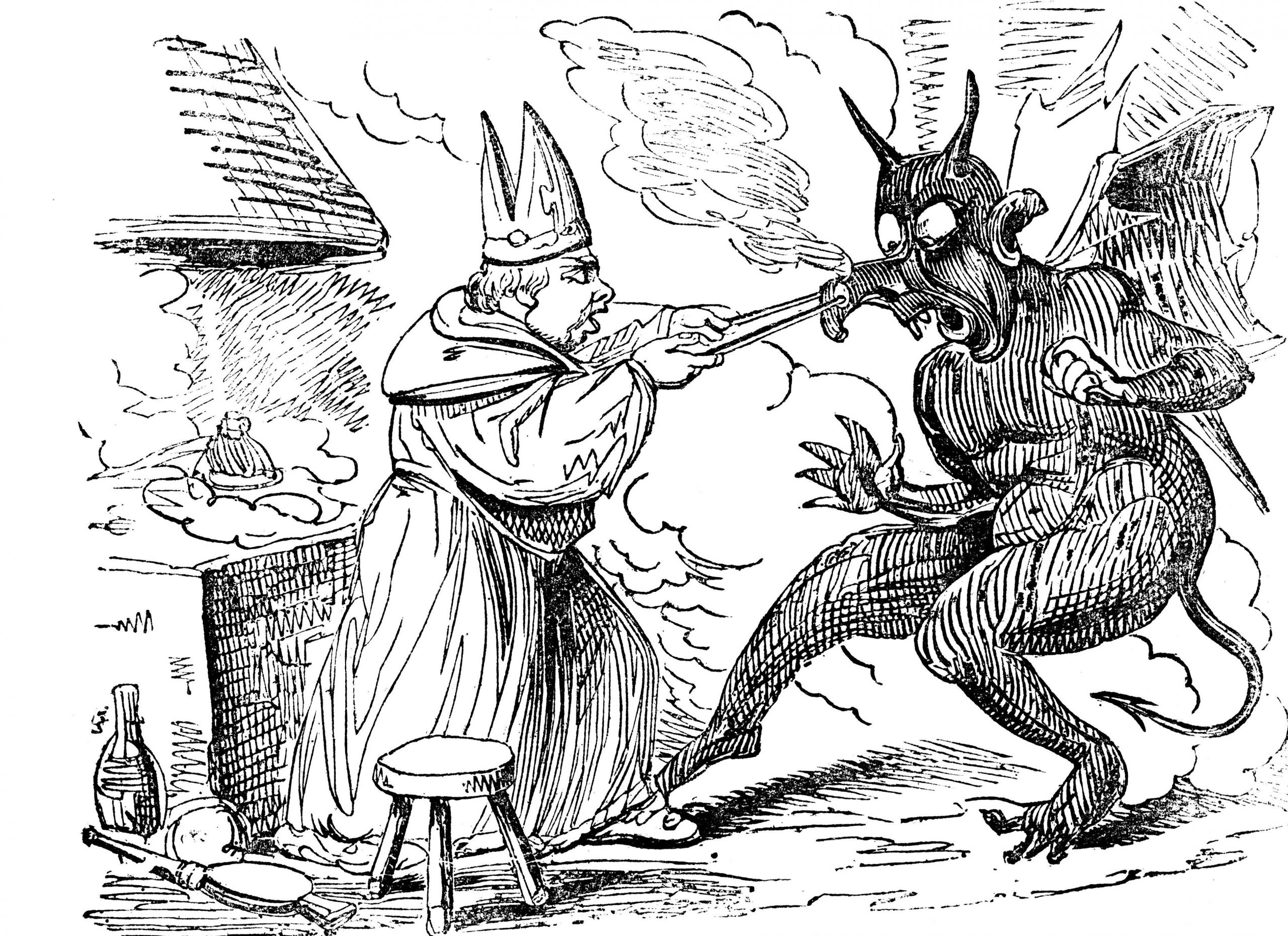Jason Goodwin: How to be a saint (you'll need some tongs and a furnace)
Ancient kings became saints by popular acclaim, says Jason Goodwin — and that is ‘the kind of sainthood worth achieving if you are a modern king, whose life through thick and thin is devoted to helping the less fortunate, upholding faith and caring for the planet.’

[This article appears in the special coronation commemorative Country Life issue of 26 April, 2023 — see what else is inside, and find out how to order a copy.]
This should be a very good week for the man who first constructed the coronation service, for King Edgar in 973. He happens to be my favourite homegrown saint and Archbishop of Canterbury, plus the feistiest blacksmith in the history of England. St Dunstan, who died in 988, was for years the most revered saint in Britain, until his cult was eclipsed by Thomas Becket. The latter, it is true, was assassinated in grievous circumstances, at the sanctuary of his own altar in Canterbury Cathedral, but I have always found him hard to love.
At school, we learnt how Becket became the boon companion of Henry II. They roistered together, drank too much, and fooled around. When Henry wanted a new, compliant archbishop of Canterbury, he proposed Becket, who was ordained and made Archbishop of Canterbury in 1162, so Henry looked forward to years of easy relations between church and state.
We all know what came next. Not the conclusion we were invited to draw as schoolboys, but I do not think it reflects much credit on Becket. Suddenly invested with the power of an archbishop, it ran to his head and he who had been Henry’s greatest chum became his most irritating antagonist. It led with some justification to the most famous muttering in the history of mutterings: ‘Who will rid me of this turbulent priest?’
Becket hogged the limelight even in death, eclipsing his predecessor, St Dunstan. Yet Dunstan was not only a great politician and church leader, he was a poet, artist, illuminator of manuscripts, brewer and blacksmith, patron saint of musicians and bellringers. His humble self-portrait in a religious manuscript still exists more than 1,000 years later. Churches dedicated to him stand at either end of the City of London and his blacksmith’s tongs decorate the coat of arms adopted by Tower Hamlets. Tiring of the Devil’s efforts to tempt him from his forge and his devotions, Dunstan grabbed his tongs from the furnace and seized the Devil by the nose until he screamed for mercy. That’s an Archbishop of Canterbury.

He lived, of course, in an age of giants. My son Harry’s dissertation is on Anglo-Saxon saintly kings, of whom there were at least five. There would be more, but Harry is more scrupulous than me and won’t admit any kings whose existence is in any doubt.
Oswald and Edwin fell in battle, inspired like Constantine by visions of the Cross. Edward, murdered by supporters of his stepmother and associated with miracles soon after, was buried, venerated and forgotten. He lies in the orthodox chapel at Brookwood, Surrey.
About Kenelm, little is known. Edmund, who ruled in East Anglia in the 9th century, was captured by Danes, who tied him to a tree and shot him with arrows until he ‘bristled like a hedgehog’. They lopped off his head and hurled it away. When villagers searched for it, it called out ‘Here, here, here’ and was found cradled between the paws of a huge wolf. Head and body were finally reunited and interred at Bury St Edmunds.
Sign up for the Country Life Newsletter
Exquisite houses, the beauty of Nature, and how to get the most from your life, straight to your inbox.
All Harry’s saintly kings came to a sticky end, but I’m glad to say it’s not automatic. Edward the Confessor died in his bed and St Helena, mother of Emperor Constantine, had a long and happy life, discovering holy relics in Jerusalem and Constantinople.
Harry’s kings became saints by popular acclaim, the kind of sainthood worth achieving if you are a modern king, whose life through thick and thin is devoted to helping the less fortunate, upholding faith and caring for the planet.

Credit: Getty Images/EyeEm
Jason Goodwin: The night I accidentally sent a friend to go dogging on a remote West Country hilltop
Oh, Jason. It could have happened to anyone.

Credit: Getty Images/Collection Mix: Sub
Jason Goodwin: 'I suspect the Church of England views parish churches as a burden and a nuisance'
Our columnist Jason Goodwin fears that the Archbishop of Canterbury 'may possibly think too much of his own gifts and

Credit: Alamy Stock Photo
Jonathan Self: Our postman delivers 1,000 items a week — and less than 50 are 'real' letters
Jonathan Self laments the fact that we're losing the art of writing letters.

Credit: Getty Images
Jason Goodwin: 'My friend was puzzled to discover me up a stepladder, cradling my airgun and scanning vegetable beds'
Jason Goodwin takes on the rats, and loses.
-
 The King's favourite tea, conclave and spring flowers: Country Life Quiz of the Day, April 22, 2025
The King's favourite tea, conclave and spring flowers: Country Life Quiz of the Day, April 22, 2025Tuesday's Quiz of the Day blows smoke, tells the time and more.
By Toby Keel
-
 London is the place for me* (*the discerning property buyer)
London is the place for me* (*the discerning property buyer)With more buyers looking at London than anywhere else, is the 'race for space' finally over?
By Annabel Dixon